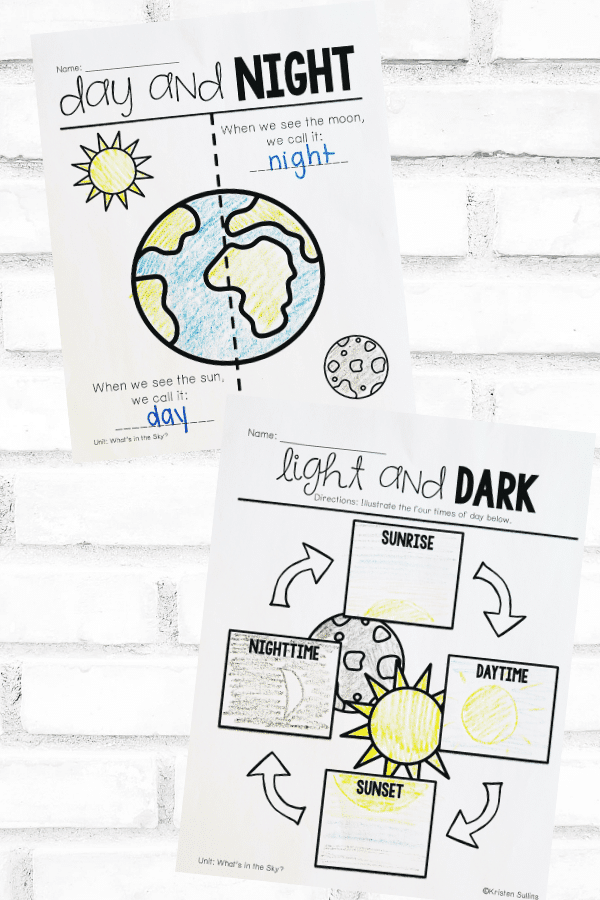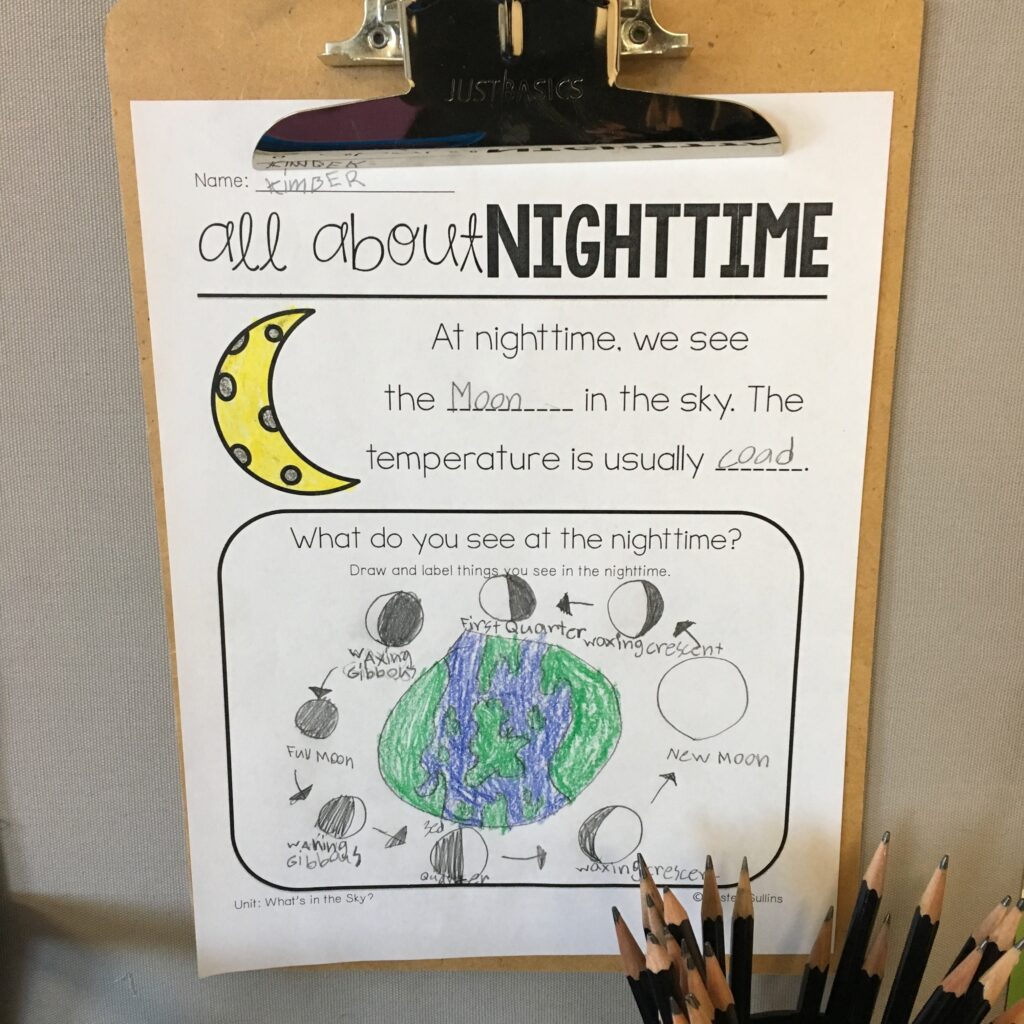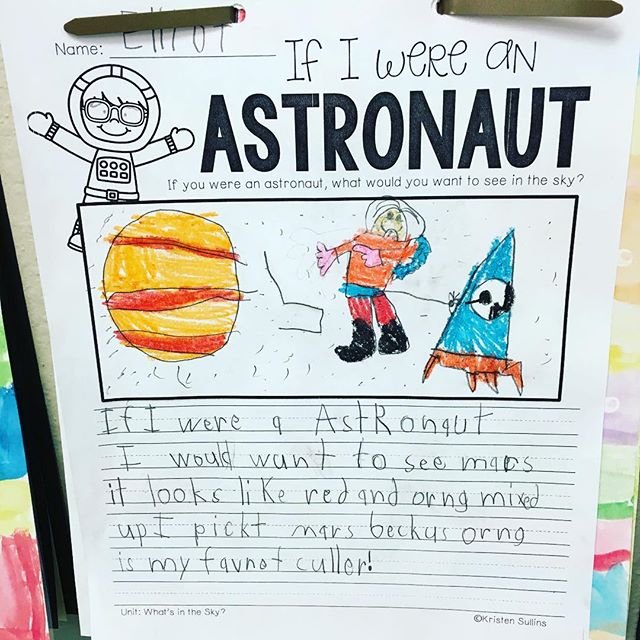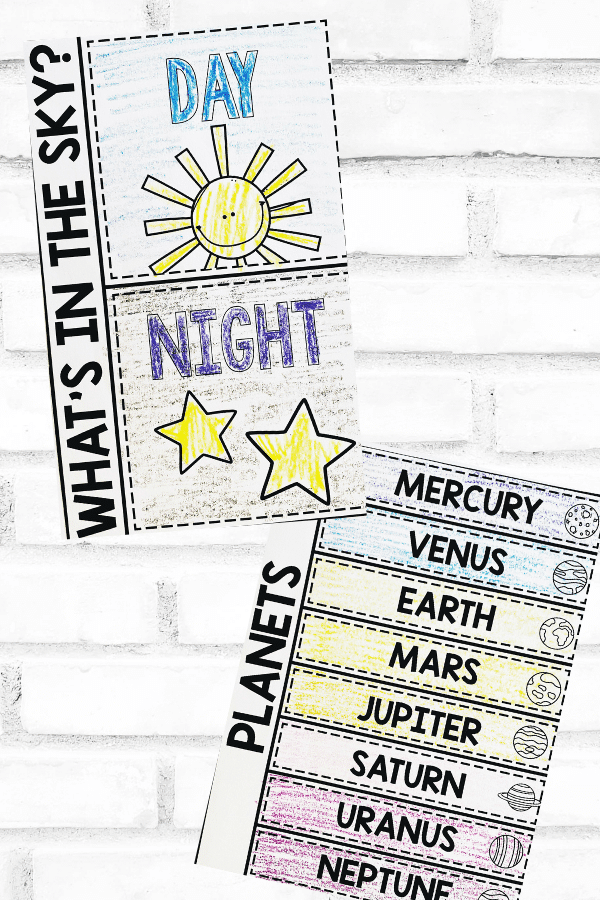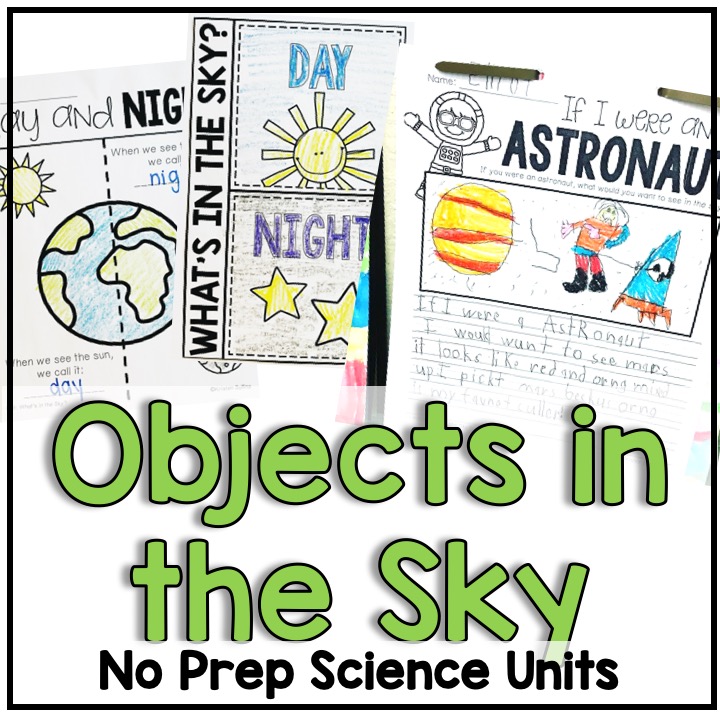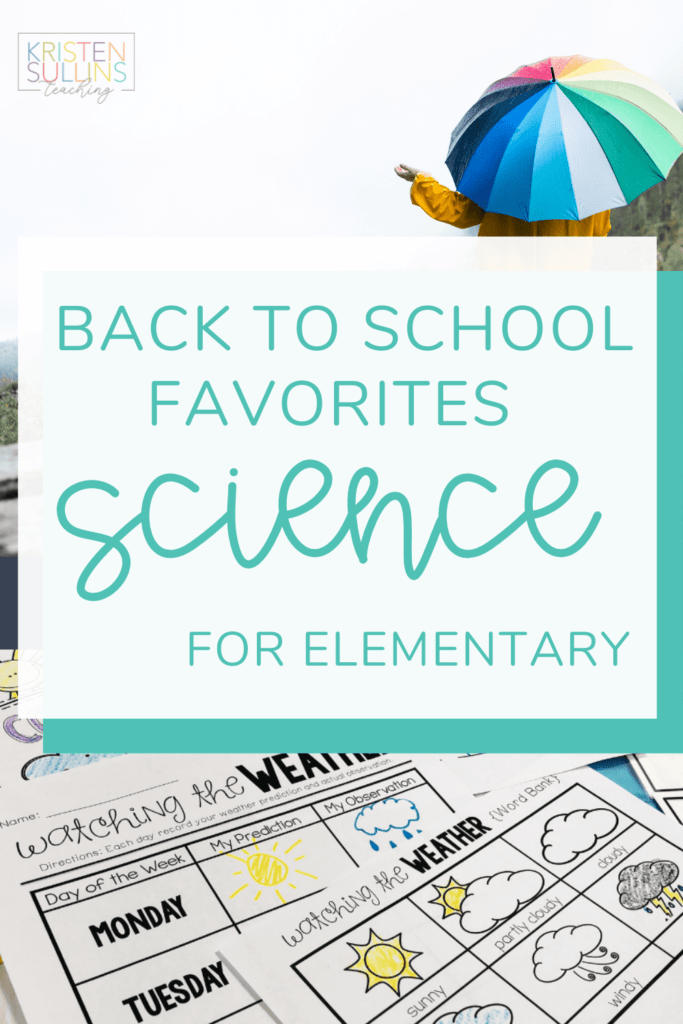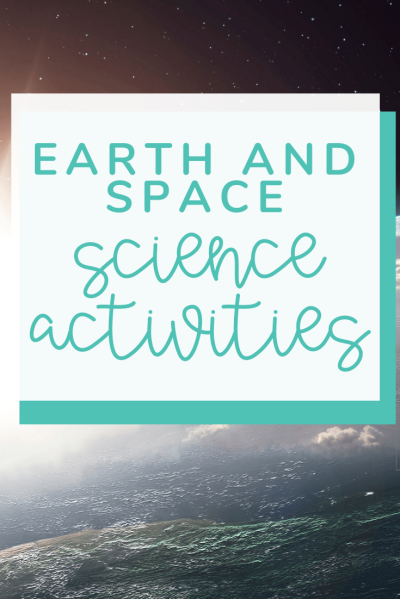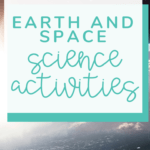The week that I get to teach my First Grade students about objects in the sky is honestly one of my favorite science weeks of the year!
We cover every “object in the sky” from the sun, to the clouds, stars, moon and planets.
We talk about what is different about day and night and how the different time of day is usually a different kind of temperature. I think we often take for granted that kids need to be taught these little life skills and this unit is such a fun way to do so!
My favorite part, and the kids' favorite part too, is when we start talking about Astronauts. I know astronauts are not usually in the first grade science curriculum, but learning about the profession of astronauts is such a fun way to tie it all together while also giving your students an aspiration for the future!
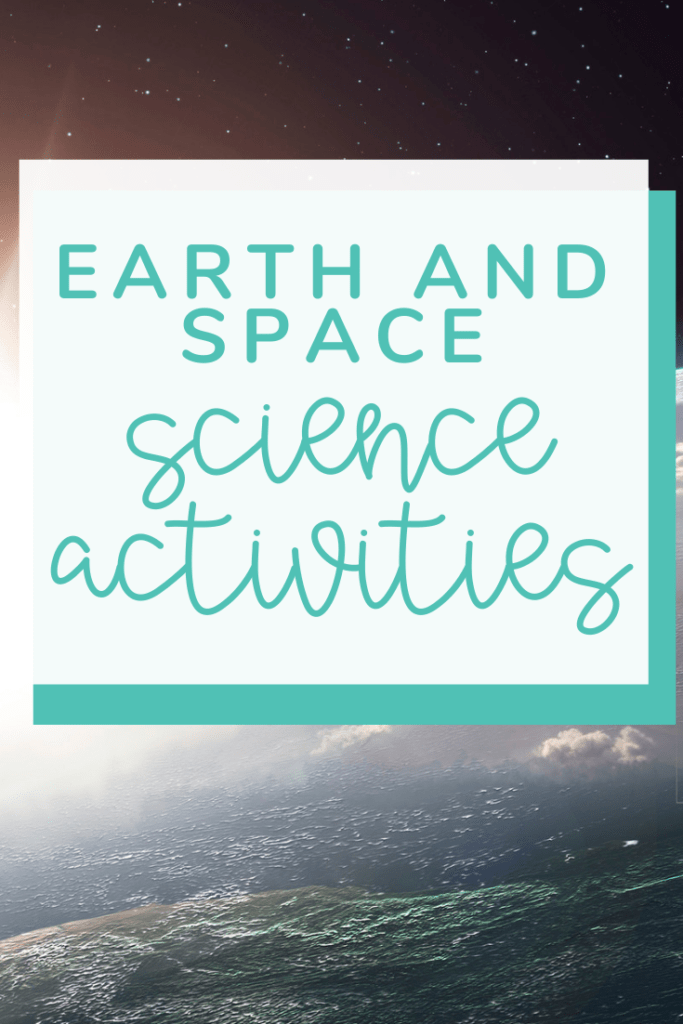
Why Space in First Grade?
First-grade students should learn about space because it sparks their natural curiosity and imagination.
Discovering space introduces them to basic scientific concepts in a fun way, encouraging a love for learning.
It expands their understanding of the world beyond, promoting early interest in science and exploration while fostering a sense of wonder.
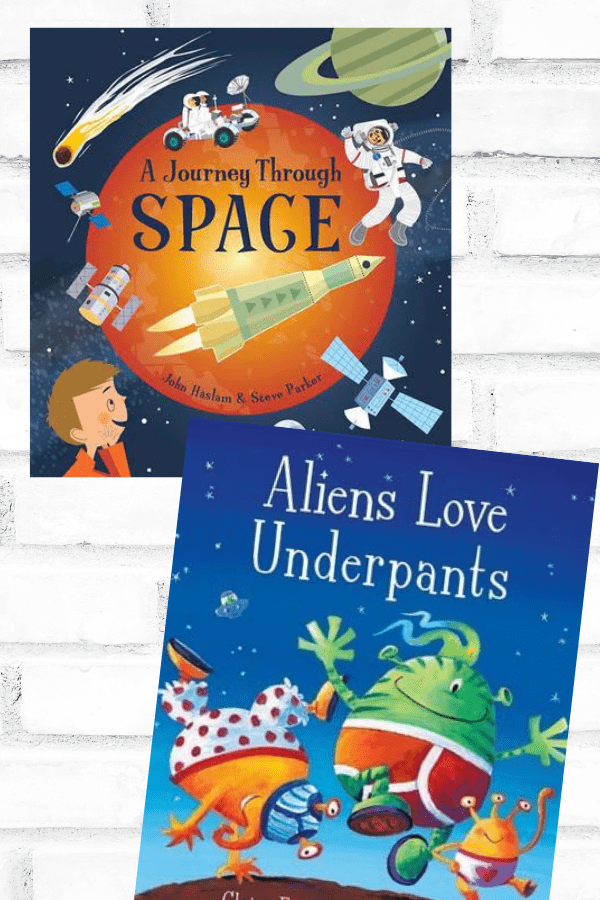
Mentor Texts for Objects in the Sky
I like to throw in a mix of mentor texts when teaching my students about space.
I choose straight-forward nonfiction with photographs, a little more fun nonfiction with maybe a character and then I also like to choose so fiction books just to help the students better relate to objects in space.
My two must-reads during my Earth and Space science unit are:
- A Journey Through Space by John Haslam and Steve Parker
- Aliens Love Underpants by Claire Freedman and Ben Cort
A Journey Through Space can be quite a lengthy book…but here's a secret….
Who says you have to read the whole thing in one sitting? I pick certain pages a day that relate to the activity I have planned. I let my students finish reading the book the next day or the next week during my reading station!
Videos
There are so many great videos out there for kids about space. Brainpop Jr. has five great videos that I show every year as a way for my students to “research” the topic of objects in the sky.
But when it's time to get creative, I LOVE to show videos of real astronauts in space. You can find lots of them on YouTube, but my favorite channel is the Canadian Space Agency [Click HERE for direct link].
I love that they are short 2-3 minute videos but they answer a lot of common questions like “how do astronauts sleep in space” or “how to astronauts brush their teeth in space”. I know these are not topics that are “must know's” in first grade, but I love the spark it creates in my students to learn more about astronauts and subsequently about Earth and space.
Guided Research about Objects in the Sky
Okay, “Guided Research” sounds like a super formal term… but what it really means is that these are the activities that we do together as a class and there is typically a right or wrong answer.
This is where I introduce new vocabulary and I am “guiding” students through books or videos to find new information. We are then recording that new information on a simple recording sheet.
These activities are completed at the beginning of the unit when students are just starting to build their knowledge base, so these activities might seem easy, but remember, they are BUILDING their knowledge on the subject.
My two favorite activities for early vocabulary building are:
- Day and Night
- Light and Dark
(pictured on the right)
These activities will be especially helpful if you have English Language Learners in your classroom.
We often take these simple words for granted and assume students know and understand them. BUT, you can't jump into moon and stars if you don't first understand the difference in night and day/light and dark.
Creative Writing
Okay, now to my favorite part. A few days into the unit, once students have a good foundation of Earth and Space, I like to start testing what they know.
Activities start to become less guided and more open-ended. I like to choose activities that allow the students to showcase their creativity and learn what they have learned about what is in the sky at nighttime and what is in the sky during the daytime.
My next activity is my favorite of the entire unit. To wrap up Earth and space science, I have my students complete the “If I Were an Astronaut” writing activity.
This may seem like just another fun writing prompt, but really it showcases what your students have learned about objects in the sky.
Not only do students have to think like an astronaut, but they also have to tell you what kind of objects they would see in the sky if they were an astronaut.
You can download this writing activity as a FREE sample of my Objects in the Sky no prep science unit here:
Interactive Journals
Interactive journals are my favorite way to compare information about Earth and Space. They allow my students to show what things have in common and what is different about it.
My students also really enjoy interactive journals because it is different, and therefore a little more engaging, than just a regular worksheet.
My two favorite journals for this Earth and Space unit are:
- Day and Night (students draw what they see in the sky during day and night)
- Planets (students draw/write the name of each planet under the flap or a unique characteristic such as the color or number of rings for that planet)
First Grade Science Activities
All activities in this blog post (except for mentor texts and videos) can be found in my No Prep Objects in the Sky science unit.
Capture students’ interest with this all in one interactive unit about objects in the sky: sun, moon and stars! Enjoy one easy download of everything your students need to learn about what’s in the sky!
Students will learn features of daytime, features of nighttime, characteristics of the sun, moon, and stars as well as the moon's phases.

